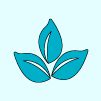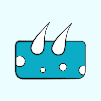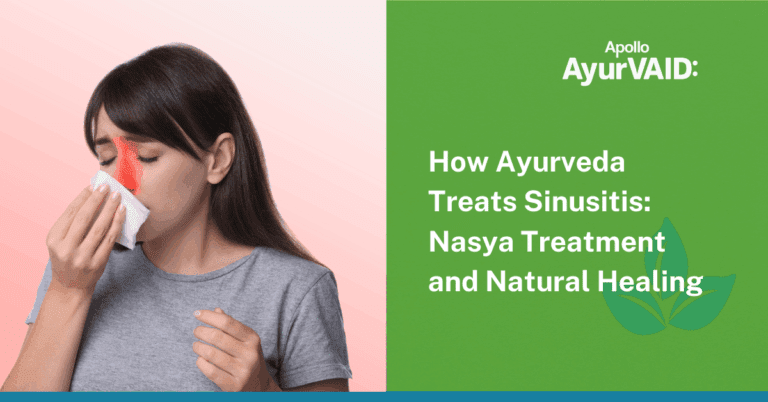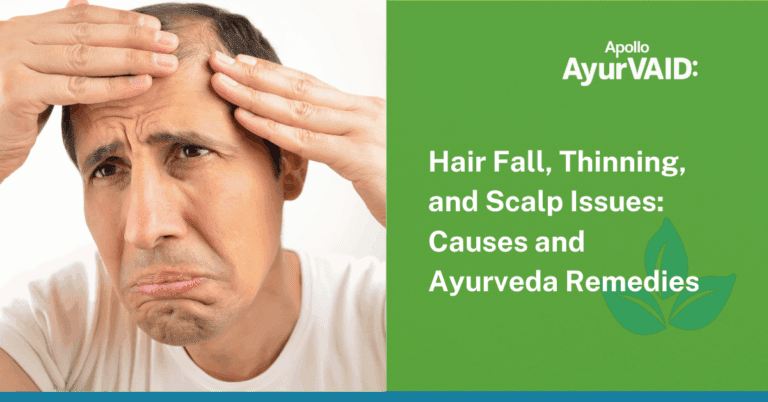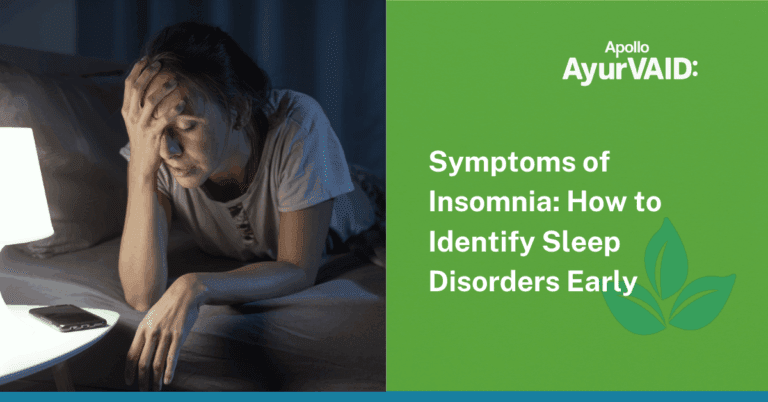Introduction
Stroke rehabilitation is a therapy program designed to help stroke survivors recover lost skills, such as movement, speech, and basic daily routines. It addresses the physical, emotional, and cognitive challenges they face daily. Rehabilitation after a stroke helps people become more independent and improves their quality of life. Physical therapy, occupational therapy, speech therapy, and psychological support are some of them.
Ayurvedic treatment for stroke paralysis offers both integrative and step-down care options. Step-down care is provided after the patient is transferred from acute care to rehabilitation centers. It is provided through skilled nursing facilities or home-based care, which caters to personalized care and reduces the impact of functional disability, improving quality of life.
Ayurveda complements conventional treatments to enhance recovery after stroke paralysis. This integrative approach simultaneously addresses physical, emotional, and spiritual needs, and Ayurveda therapies (Panchakarma, Abhyanga, Vasti) aid in muscle strength, flexibility, and mobility. In addition, these therapies also decrease stress, anxiety, and depression and help in the process of recovery and well-being.
Recovery after a stroke can be challenging. In this blog, we will explore Ayurveda therapies offered for stroke, and how they enhance the quality of life for survivors.

Stroke Rehabilitation -Steps involved
Recovery after stroke paralysis is influenced by many factors including physical, emotional, social, and therapy adopted. The duration of recovery depends on the time of intervention. The first few weeks following a stroke are critical for recovery, as this period typically sees the most significant improvement in cases of motor paralysis. Rehabilitation can continue for 12-18 months or even more. Progress is greatly achieved through motivation and skilled care. This life-changing event can be tough but with determination and commitment from the patient and their family and a professional rehabilitation team, it is entirely achievable.
During rehabilitation from a stroke, it is crucial to engage in motor-skill exercises, mobility drills, and range-of-motion therapy to strengthen muscles and enhance coordination. There are other forms of cognitive and emotional activities that need to be done such as speech therapy, for which a psychological assessment should be done. It should begin 24 to 48 hours after stroke (acute stage) and last depending on the severity of the stroke and related complications. Alongside the assessment, medication may be required to improve alertness, agitation, or movement. Stroke Rehabilitation can occur in inpatient settings, outpatient clinics, skilled nursing facilities, or through home-based programs.
Ayurvedic Treatment for Stroke Paralysis
Stroke patients can be effectively treated with Ayurveda within the first month after onset, with a therapeutic regimen of multiple steps based on symptoms and chronicity. The most direct, non-invasive way to get medications targeted to the brain is through Nasya, which completely bypasses the blood-brain barrier. Other basic Ayurveda procedures involve Abhyanga (oil therapy), Swedana (fomentation), Dhara (pouring of the medicated decoction or oil in the body areas), Lepana (paste application), Snehana (internal and external oleation) Virechana (purgation), Vasti (therapeutic enema). These treatments are important and are considered key steps in stroke treatment.
- Snehana (oleation): Both internal and external oleation nourishes the body’s tissues, restoring muscle function and reducing spasticity in affected areas.
- External Snehana: Warm herbal oils are applied over the body or head to improve circulation, and flexibility, relieve muscle stiffness, and promote relaxation. It also helps to improve muscle tone, reduce spasticity, boost mobility, and improve blood flow. Abhyanga especially aids in delivering nutrients and oxygen to damaged tissues, alleviating stress and anxiety, offering emotional and mental relaxation, and enhancing stroke rehabilitation.
- Internal Snehana: Internal oleation is done with the help of medicated ghee. As ghee is rich in saturated fatty acids and conjugated linoleic acid (CLA), it helps reduce oxidative stress and supports stroke recovery. Its lower sterol content benefits cardiovascular health, while its antioxidants combat oxidative stress and neuronal damage. Ghee also prepares the body for detoxification, eliminating toxins that may hinder recovery.
- Swedana (fomentation): This process uses steam to induce sweating, which improves blood flow. Enhanced circulation may facilitate recovery of motor functions and alleviate pain.
- Dhara (pouring medicated decoction or oil): Continuous pouring of medicated oils or decoctions over the forehead (Shirodhara) can calm the mind, reduce stress, anxiety, and depression developed post-stroke, and improve mental clarity, potentially aiding cognitive recovery.
- Lepana (paste application): Applying herbal pastes (Agnilepa) to the affected areas can help reduce inflammation and promote healing, potentially aiding in the recovery of motor functions.
- Virechana (therapeutic purgation): The gut-brain axis, which links the brain and gut, is often disrupted after a stroke, with brain damage affecting gut function and vice versa. Constipation is a common post-stroke issue, caused by factors like reduced mobility, changes in diet, medications, and lower fluid intake. Virechana can play a key role in addressing these challenges. It promotes the elimination of toxins and improves bowel function, it helps restore balance in the digestive system, supporting both gut health and overall recovery. It enhances gut-brain communication, alleviates constipation, and promotes mental well-being, making it a valuable tool for stroke rehabilitation.
- Vasti (Enema): Vasti plays a vital role in stroke management by balancing the aggravated doshas (primarily Vata) in stroke patients. It enhances nerve function, muscle strength, and mobility in the affected areas. Additionally, Vasti detoxifies the body and nourishes the nervous system, making it an essential part of stroke rehabilitation. It also supports the coordination between the gut and brain, improves gut microbiota, and promotes better motility, effectively reducing constipation.
Apollo AyurVAID’s stroke management uses an integrative approach, combining Ayurveda and modern medicine. It conducts a comprehensive health assessment, identifies the root cause, addresses neuro-cognitive dysfunction, reduces inflammation, and restores sensory-motor functions. Ayurveda physicians and therapists provide end-to-end rehabilitation care.

Conclusion
Stroke rehabilitation must have a holistic approach that brings conventional medical treatments with comprehensive Ayurveda therapies. Modern medicine and Ayurveda interventions such as Panchakarma provide stroke survivors with a more distinct path to recovery. Targeted therapies like Abhyanga, Virechana, and Vasti can help patients address physical, cognitive, and emotional challenges while supporting neurological healing and restoring gut-brain axis function and overall well-being. The key factor is personalized, integrated care tailored to the patient’s unique recovery journey.
References
- Centers for Disease Control and Prevention. (2024, May 15). Treatment and Intervention for Stroke. Treatment and Intervention for Stroke | Stroke | CDC
- American Stroke Association. (no.date.). Post-Stroke Rehabilitation. Recovery After Stroke | American Stroke Association
- Sylaja, P et al. (2023). Ayurvedic Treatment in the Rehabilitation of Ischemic Stroke Patients in India: A Randomized Controlled Trial Study Protocol. Cerebrovascular Diseases, 52, 609 – 615. https://doi.org/10.1159/000530546
- Baby, P et al. (2020). Lived Experiences of Stroke Survivors Undergoing Ayurvedic Rehabilitation Therapy in India. Advances in mind-body medicine, 34(4), 10-16. https://pubmed.ncbi.nlm.nih.gov/33186126
- Sankaran, R., Kamath, R., Nambiar, V., & Kumar, A. (2019). A prospective study on the effects of Ayurvedic massage in post-stroke patients. Journal of Ayurveda and Integrative Medicine, 10(2), 126-130. https://doi.org/10.1016/j.jaim.2018.02.137

